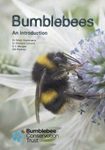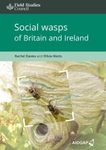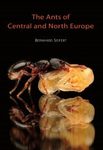By
Leon (NHBS Catalogue Editor)
12 Jul 2021
Written for Hardback

Making groundbreaking scientific contributions on a shoestring budget has become a challenge in the 21st century. But there are still opportunities. Take American entomologist Walter R. Tschinkel. With little more than scrap metal, homemade portable kilns, and one almighty spade, he has been researching the architecture of ant nests, pouring molten metal into tiny holes in the ground and digging up the resulting casts. The beautifully illustrated
Ant Architecture provides a glimpse into his unusual methods but also shows the many fascinating findings and questions his research is throwing up. Supremely interesting, this is unlike any book on insects you have seen before and is already a firm candidate for my top five favourite books of 2021.
How do you even conceive of the idea of pouring molten metal down an ant's nest to get a three-dimensional cast? It started as an innocent byline of his long-term research on fire ants in Florida. Generations of entomologists have been excavating ant nests, and some have tried to render what they found in two-dimensional diagrams with varying degrees of success. A few have even experimented with making casts using cement or plaster, but no one has become so obsessed with revealing this hidden underground world as Tschinkel has. Given the unorthodox nature of his research, it is entirely appropriate that he first gives an illustrated introduction to his methods and how he has refined his field gear over the years. The amusing anecdotes should reel you right in, as toying around with containers of red-hot molten aluminium or zinc is not for the faint of heart. The resulting casts, once dug up, are beautiful, otherworldly structures of interconnected chambers and tunnels, winding down into the soil for several metres.
Fortunately,
Ant Architecture goes far beyond mere novelty factor and pretty pictures. There are so many questions to be asked. Much of this research is still at the stage of collecting basic observations, and ahead of us lies a vast, unexplored realm. But, with patience and persistence, Tschinkel and his many students and field assistants have started to unearth the first answers. Let me give you three examples I particularly enjoyed reading about.
The casts reveal regularities in the vertical distribution of chambers. Many nests have a dense cluster of closely spaced rooms near the surface, but fewer chambers at bigger intervals as you descend. Despite operating in total darkness, the ants somehow know how deep underground they are while excavating. The question of "how" led to a long series of increasingly ingenious experiments. Might they use the soil concentration gradient of CO
2? Is it just a probabilistic phenomenon where a fixed percentage of ants stops their descent at each depth increment? Do they count steps on their way down, similar to desert ants?In all cases, the answer is no. The ants knew exactly how far down they were and started digging the appropriate rooms normally seen at that depth. The "how" is still a mystery, but we do have an idea of the cues they do not use. Biologists who do fieldwork will nod their heads, recognizing this painstaking process of eliminating explanations one by one.
You will probably have heard ants being referred to as a superorganism. The vast majority of ants are sterile and will never directly contribute to the next generation, instead contributing indirectly by dividing labour to protect and feed the queen and rear the colony's offspring. Tschinkel's work on several species has shown the spatial organisation this takes inside of the nest. As you go down, you first pass a layer of larders stocked with seeds and other edible bits gathered from the environment. Towards the bottom of the nest, safe from harm, is the queen with her brood, tended to by young workers. As workers age, they gradually move up through the nest, working on e.g. expanding it and trafficking food and waste. Towards the end of their lifespan they take on their riskiest task: foraging on the surface. Tschinkel observes wryly that "Ants, in other words, send their old ladies out to do the dangerous work" (p. 149). There are passages in this book that cracked me up. Interestingly, their tasks change with age on a fixed schedule, as manipulations of the number of workers in different age classes show. Even if you create an artificial shortage in one age class, ants from other age groups do not switch tasks to pick up the slack.
The last question I want to mention is whether there are evolutionary trends in nest architecture. As Tschinkel reminds the reader repeatedly, what evolves "is not the ant nest – which is just hollow space in dirt – but the behavior of the ants that dig the nest" (p. 9). Once you start comparing different species – and we have surveyed only a fraction – the variation in nest design and size is wild, as several photo galleries here show. Can we draw phylogenetic trees based on nest architecture? So far, it seems the answer is no. In some closely related groups, nests resemble each other, but in others this is not the case. Given that nests are effectively modular structures consisting of repeats of a few components such as shafts and rooms, it seems that all it takes for evolution is "a few twitches to worker behavior and voilà, different architecture" (p. 202).
There are plenty of other supremely fascinating topics discussed here, but I will not spoil it all. As alluded to already, Tschinkel's writing is engaging and accessible, making this book an absolute joy to read. What I really appreciated are some of his sharp observations. Popular science writing makes much of the relative strength of ants and how they can easily carry many times their own mass. Tschinkel gives a more realistic perspective on allometry: "If we were the size of ants, their feats would seem ordinary to us and we would be able to match them without a problem" (p. 68). On scientific enquiry he muses that: "We can only test the hypotheses we have imagined, and thus we circle around the question. Eventually we find a reason that satisfies us, and then we stick to that story until there is compelling evidence to abandon it." (p. 76). And the introduction to chapter 8, describing milestones in life's 4 billion year evolution, is a masterclass in science writing.
Princeton University Press has also thrown its weight behind this book.
Ant Architecture is printed in full colour on heavy paper stock, illustrations have been redrawn, and nest photos are presented on grey or blue backgrounds for optimal visibility. The production values are, in short, top-notch. Whether you have only a passing interest in ants or are a seasoned myrmecologist, I besiege you to pick this up – you would be missing out on a unique book otherwise.




































